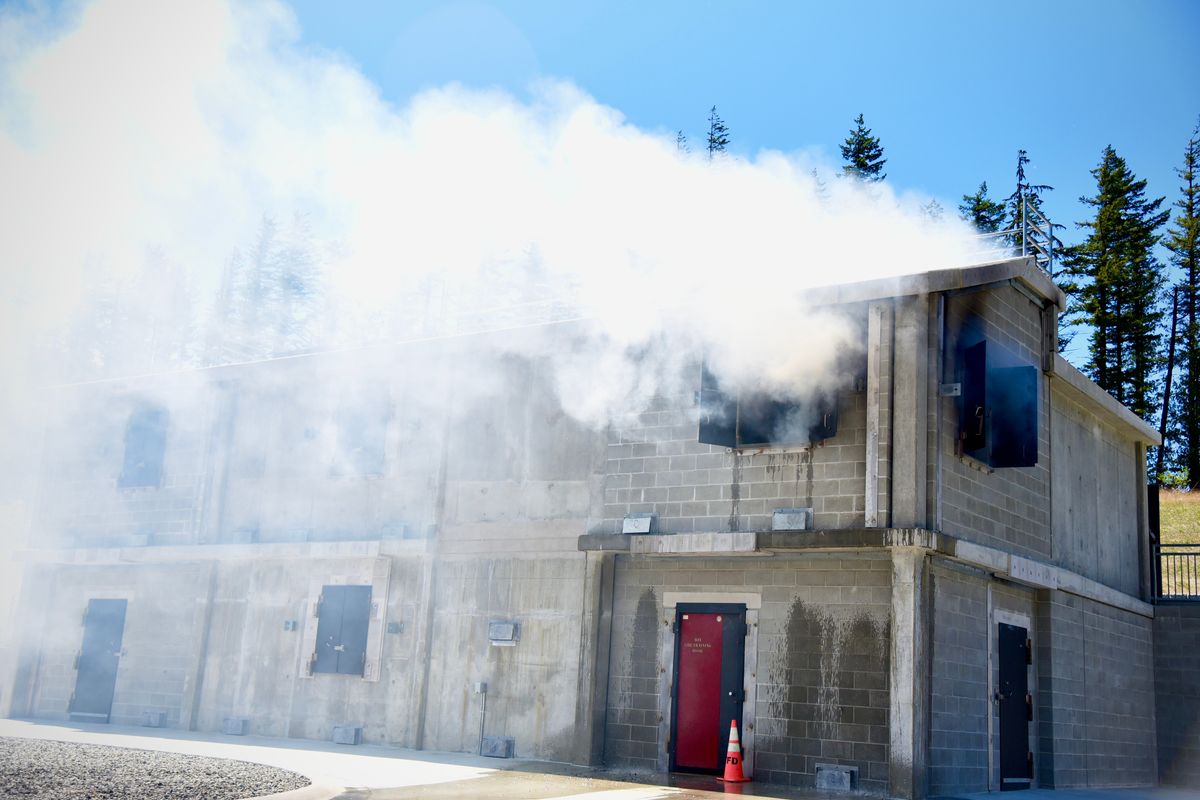WSP fire academy’s new training buildings offer crucial hands-on practice with flames

When firefighters are able to train for emergencies in real wood-burning flames, officials say it helps them save lives – including their own.
Two newly built structures finished this summer will allow local, state and national first responders working across Washington to do just that.
On Friday, the Washington State Patrol’s Fire Training Academy officially opened two training buildings at the state agency’s fire headquarters near North Bend. Called burn buildings, the multistory structures will allow for larger and more realistic fire training exercises.
“Without structures like this, the fire service wouldn’t be where it is today,” retired Washington Fire Marshall Chuck Duffy said at a ribbon-cutting ceremony. “You’d be going to a lot more fire service funerals.”
The new buildings – funded through state capital projects – were completed last month and cleared this week for live burn training. One is built to emulate a two-story house. The other is meant to mimic an apartment complex.
At North Bend, fire officials will light wooden pallets on fire in the new buildings. Firefighters will study the way the wood burns and the way the smoke moves.
Right now, the WSP academy is the only fire training facility in Washington permitted to do Class A burning, or wood burning. All other burn buildings in the state must burn liquids or get a special-use permit to burn down a structure, said Katie Rasmussen, assistant commander of the training academy.
“The benefit to these is that firefighters get real-world experience on how a fire behaves and how a fire reacts to water,” Rasmussen said. “As opposed to if you have a simulated fire, or a flammable liquid fire, there’s someone controlling how that fire reacts – adding more or less fuel behind it.”
The two new training buildings built side-by-side have opened the door to a new type of fire training at the academy, bringing together multiple agencies to practice in tandem.
In an emergency fire response, it is common that two or more different agencies will join to contain a fire. The new structures allow fire departments to work together on a simulation where multiple buildings are burning next to each other.
“A lot of the fire departments in our state are going into what’s called consortiums, where they pool their resources into one community resource,” Rasmussen said. “They are able to practice drills here and see how a multiagency response will pan out.”
The first burn building at the North Bend academy was opened in 1984. Back then, it was deemed to have a 20-year lifespan, Rasmussen said. Forty years later, that original building has finally been decommissioned for live burns. The structure will keep standing and be used for search-and-rescue training and smoke simulations.
On Friday, firefighters conducted a live fire demonstration in one of the new burn buildings for ceremony attendees to watch. The fire mimicked what would happen if a cigarette started a fire in the upholstery of a couch. Raging orange flames poured out of two upper-story windows as the fire moved into the “fully developed stage,” meaning there were equal amounts of heat escaping the building and new oxygen entering.
Christ Loftis, state patrol communications director, was among the crowd watching the test burn. He said his team was proud of the new additions to the training academy.
“So many people don’t realize that the Fire Marshal’s Office is within WSP,” Loftis said. “We’ve got 2,100 employees when you count all divisions. Roughly 680 of those are road Troopers. But there are so many other things we do as well. Most people think we’re just the guys in the white cars on the side of the road.”